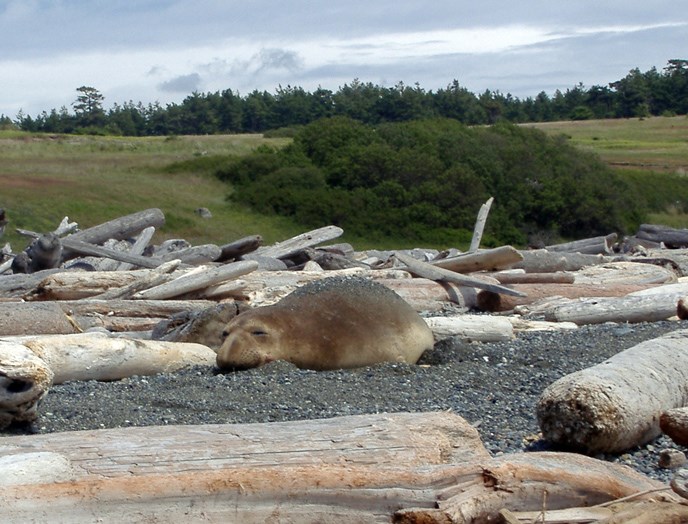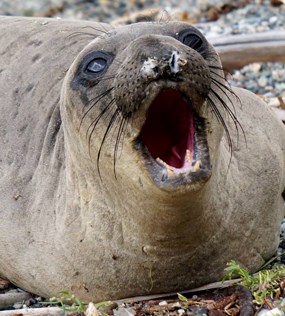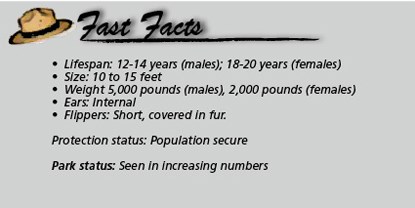
Gordon Smith 
Gordon Smith (top) Rebecca Smith (above) In recent years, increasing numbers of elephant seals have been observed molting on South Beach and Third Lagoon in American Camp. There is no mistaking the huge, brownish-gray adult males. They have large, pendulous, inflatable noses that resonate with sound when threatening others. They dominate with sheer bulk and vocal "clap-threats," which can be heard for miles. They spend most their solitary life at sea, coming ashore for breeding in winter or molting in spring and summer. In fact, they are the only pinniped in this area to go through an annual catastrophic molt-sloughing off the outer layer of skin and fur. Gregarious and noisy with snorts and belches when on land, they sleep during the day, crowding close to others on sandy beaches. Well known for their diving ability, they fan their broad hind flippers out for good propulsion and can dive continually at sea at great depths of 1,000 to 2,500 feet for 20 to 30 minutes. The deepest recorded dive is 5,141 feet, and the longest: two hours. With canine teeth up to eight inches long, they sometimes forage on the sea bottom, and eat deep-water invertebrates and fish, including squid, octopus, crabs, rays, small sharks, and large fish. If you encounter an elephant seal, please keep a safe distance of at least 200 yards. 
|
Last updated: March 31, 2015
